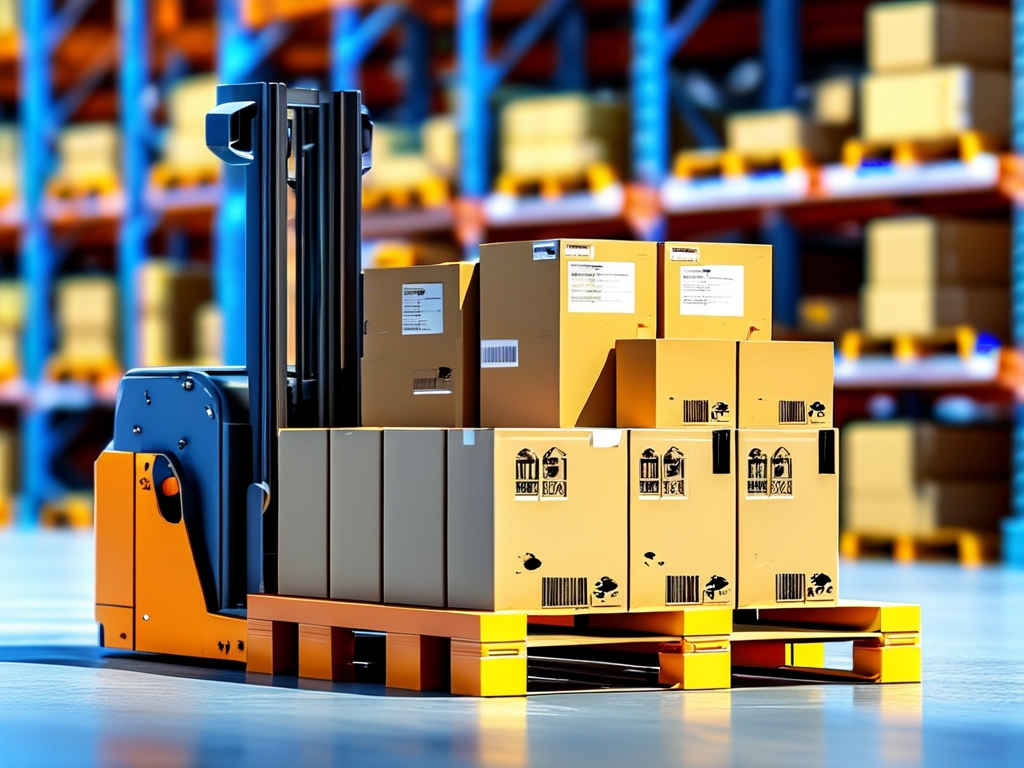The logistics and warehousing industry has undergone transformative changes in recent years, driven by the need for speed, accuracy, and scalability. Among these advancements, the automated deployment of Warehouse Management Systems (WMS) stands out as a game-changer for goods receiving and storage operations. By integrating cutting-edge technologies like IoT, robotics, and artificial intelligence, businesses can streamline workflows, reduce human error, and optimize inventory management. This article explores how automated WMS solutions are reshaping modern warehouses and the tangible benefits they deliver.

The Evolution of Goods Receiving
Traditional goods receiving processes often involve manual data entry, physical inspections, and paper-based documentation—methods prone to delays and inaccuracies. Automated WMS solutions address these challenges by leveraging technologies such as:
- IoT Sensors and RFID Tags: Real-time tracking of incoming shipments ensures instant visibility into inventory levels, shipment conditions, and delivery timelines.
- Machine Vision Systems: Cameras and AI-powered software automatically scan barcodes, verify product quantities, and detect damaged goods.
- Automatic Data Integration: Seamless synchronization with Enterprise Resource Planning (ERP) systems eliminates redundant data entry and ensures consistency across platforms.
For example, a warehouse using automated WMS can process inbound shipments 50% faster by eliminating manual checks. Sensors on pallets trigger alerts when goods arrive, while robotic arms unload and sort items based on predefined rules. This not only accelerates throughput but also minimizes the risk of misplacement.
Automated Storage: Precision and Space Optimization
Storage efficiency is critical for warehouses dealing with high-volume inventory. Manual storage practices often lead to underutilized space, misplaced items, and delayed order fulfillment. Automated WMS introduces dynamic solutions such as:
- Automated Storage and Retrieval Systems (AS/RS): Robotic cranes and shuttles place items in optimal locations based on demand patterns, maximizing vertical space.
- AI-Driven Slotting Algorithms: Machine learning models analyze historical data to determine the best storage locations for fast-moving vs. slow-moving goods.
- AGVs (Automated Guided Vehicles): These self-navigating robots transport goods between receiving docks and storage zones without human intervention.
A case study from a retail distribution center revealed that implementing AS/RS reduced storage footprint requirements by 30% while improving retrieval accuracy to 99.9%. By automating storage decisions, warehouses can adapt to seasonal demand spikes without overhauling infrastructure.
Integration with Emerging Technologies
The true power of automated WMS lies in its ability to integrate with other Industry 4.0 technologies:

- Predictive Analytics: By analyzing historical data, WMS can forecast inventory needs and preemptively allocate storage space.
- Blockchain for Traceability: Automated systems record every transaction in an immutable ledger, enhancing transparency for audits and compliance.
- Cloud-Based Scalability: Cloud-hosted WMS platforms allow businesses to scale operations globally without heavy upfront investments.
For instance, a pharmaceutical company using blockchain-integrated WMS reduced compliance audit times by 40%, as all temperature-controlled storage data was automatically logged and verified.
Challenges and Mitigation Strategies
While automation offers immense benefits, its deployment is not without hurdles:
- High Initial Costs: Robotics and IoT infrastructure require significant capital. However, modular implementation—starting with high-impact areas like receiving—can spread costs over time.
- Workforce Adaptation: Employees may resist automation due to fear of job displacement. Proactive training programs and upskilling initiatives help transition staff to supervisory or analytical roles.
- System Downtime: Regular maintenance and redundancy planning (e.g., backup servers) ensure uninterrupted operations.
The Future of Automated WMS
As AI and 5G networks evolve, future WMS platforms will likely incorporate:
- Autonomous Drones for real-time inventory checks in large warehouses.
- Digital Twins to simulate and optimize storage layouts before physical implementation.
- Sustainability Features like energy-efficient robotics and waste reduction algorithms.
Automated deployment of WMS is no longer a luxury but a necessity for warehouses aiming to compete in a fast-paced, data-driven market. By revolutionizing goods receiving and storage, businesses achieve unprecedented levels of efficiency, accuracy, and scalability. While challenges exist, strategic planning and phased adoption enable organizations to harness automation’s full potential. As technology advances, the warehouses of tomorrow will operate as seamlessly interconnected ecosystems, where human expertise and automated systems coexist to drive innovation.

